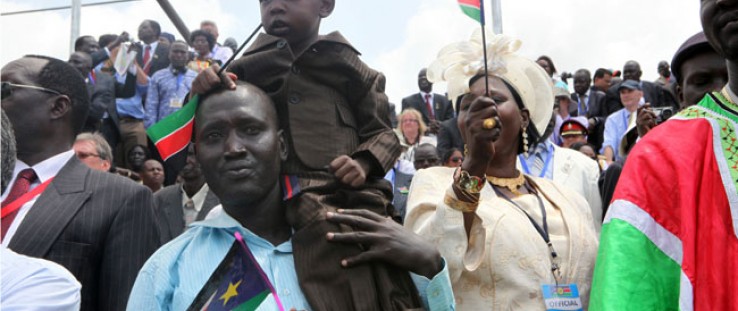 South Sudan Independence Day celebrations, July 9
Jenn Warren
South Sudan Independence Day celebrations, July 9
Jenn Warren
 South Sudan Independence Day celebrations, July 9
Jenn Warren
South Sudan Independence Day celebrations, July 9
Jenn Warren
On July 9, after decades of civil war and the loss of more than 2 million lives, South Sudan seceded from Sudan and became the world’s newest nation—a peaceful and democratic breaking-in-two of what was Africa’s largest country.
The event brought joy to the streets and dusty roads of South Sudan, where nearly 99 percent of citizens who voted in the USAID-assisted referendum on self-determination chose secession last January. The mood was more somber in Khartoum, where the feeling among many was uncertainty about their suddenly smaller country’s economic future, since most of Sudan’s oil—the lifeblood of the economy—is in the south.
Because of the severe human toll and destabilizing consequences of conflict in Sudan—not only the north-south conflict, but also the tragedy of the Darfur conflict that began in 2003—Sudan has for years been the U.S. Government’s highest priority in Africa.
The division of Sudan has brought changes for the U.S. Government as well. USAID’s Sudan mission, which was reopened in 2006—14 years after USAID’s international staff had evacuated Juba and four Sudanese USAID staff were executed by Sudanese military intelligence—became the USAID mission in South Sudan on July 9, and the U.S. Consulate became a U.S. Embassy.
Despite the pride and exhilaration Southern Sudanese felt in achieving independence, the challenges their new nation faces are daunting. A landlocked country with oil resources but without its own pipeline to transport and export the oil, South Sudan is still negotiating with Sudan on revenue sharing or fees Juba would pay Khartoum to enable export of oil through Port Sudan.
More than Oil
South Sudan’s economy is exceedingly oil-dependent. As the country approached independence, 98 percent of Government of South Sudan revenues came from oil, as part of revenue sharing agreed to in the 2005 Comprehensive Peace Agreement (CPA) that ended the north-south civil war. This almost total reliance on a single revenue stream makes the country vulnerable to economic shock from fluctuations in the price of oil or any disruptions in production.
Additionally, the severe lack of infrastructure in South Sudan has hindered economic growth.
“In most developing countries that come out of conflict, you talk about reconstruction, but in South Sudan, you’re really talking about construction. They had very little to start with,” said William Hammink, who was USAID mission director in Sudan from 2009 to 2011.
“In 2005, Juba was still a garrison town that armed forces of the north controlled. All the various infrastructure, such as sewers, electricity, roads—dated to the British colonial days of the 1950s. So not only is South Sudan starting from scratch in terms of government institutions, but also its infrastructure,” he said.
South Sudan also faces a severe challenge in terms of human capital—shortfalls in the number of educated and trained workers needed to run the government of the new country, where the literacy rate is only 27 percent, one of the world’s lowest. The rate is even lower among women, so USAID is providing scholarships to help girls enroll and remain in school, and training opportunities for women, including teacher training.
South Sudan also faces the challenge of integrating into productive employment hundreds of thousands of recent returnees who have come back to their ancestral home areas after years or decades living in northern Sudan. Since October 30, 2010, more than 370,000 Sudanese have returned to South Sudan and the Three Areas—the Abyei Area and Southern Kordofan and Blue Nile states.
When the CPA was signed in 2005, it created the autonomous sub-national Government of Southern Sudan—an institution on paper only—with no buildings, equipment, or personnel. USAID helped transform the concept of this institution into a functioning government, with ministries, transparent budget systems, a tax administration, and a central bank.
Sudan
Population: 30.9 million
(Source: 2008 Sudan Population and Housing Census)
Land size: 1,861,484 square kilometers – 16th largest in the world
Literacy: 77.5 percent of adults
(Source: UNICEF)
South Sudan
Population 8.26 million
(Source: 2008 Sudan Population and Housing Census)
Land size: 644,329 square kilometers - 42nd largest in the world
Literacy: 27 percent of adults
(Source: South Sudan Center for Census, Statistics, and Evaluation
A Strategy for Transition
Since 2005, USAID’s strategy for assisting Sudan had been based on implementing the CPA, which expired with South Sudan’s independence. In June, USAID released a two-year transition strategy for the new nation with the overall goal of making it more stable in the post-CPA period.
“In developing our strategy for assistance to South Sudan during this critical transitional period, we built on four key objectives—mitigating the whole range of potential conflicts in South Sudan; building a sound system of governance for the new state; ensuring the provision and further development of basic services; and helping South Sudan expand its opportunities in agriculture,” said Jim Parys, supervisory program officer, who led the team that drafted the strategy.
One of USAID's key efforts to help South Sudan engage with the international community, including the private sector, on its development priorities is an International Engagement Conference to be held in Washington later this year.
The U.S. Government will sponsor the conference with the African Union and Turkey, and with the participation of bilateral and multilateral government partners, including the European Union, United Nations, African Development Bank, and World Bank, as well as private sector organizations including Citibank and the Corporate Council on Africa.
Sudan
One of USAID's key efforts to help South Sudan engage with the international community, including the private sector, on its development priorities is an International Engagement Conference to be held in Washington later this year. The U.S. Government will sponsor the conference with the African Union and Turkey, and with the participation of bilateral and multilateral government partners, including the European Union, United Nations, African Development Bank, and World Bank, as well as private sector organizations including Citibank and the Corporate Council on Africa. The conference will allow the new nation to present its development vision to the international community and to present its key policy commitments over the next two years while reaching consensus with the international community on a framework for coordination of development initiatives.
The conference will allow the new nation to present its development vision to the international community and to present its key policy commitments over the next two years while reaching consensus with the international community on a framework for coordination of development initiatives.
One of the goals of agriculture development is to reduce the vulnerability that comes with overreliance on oil by diversifying the economy and tapping one of South Sudan’s most valuable resources—fertile land.
While the new strategy guides how U.S. Government funding will be invested to help stabilize South Sudan, USAID is also providing leadership in the international community by securing commitments from the Republic of South Sudan in four key pillar areas critical to the new nation’s long-term viability—creating an environment that enables promotion of private investment; bolstering the agriculture sector to become the engine for South Sudan’s economic growth; developing a common platform and institutional structure for the international community to invest in South Sudan; and building the human capital necessary to govern and deliver services.
“South Sudan is unusual among our development partners,” explained Deputy Assistant Administrator for Africa Raja Jandhyala. “In the short term, it will be financially vulnerable as it puts in place macroeconomic systems and reaches agreement with the Government of Sudan on sharing of oil revenues or user fee arrangements. In the medium-to-long term, it will have national revenue from oil that exceeds development resources, as the foreign assistance funding levels for the United States and other major donors are under significant pressure. Considering this new economic dynamic, our role is to use our leadership, political capital, and experience to help the Republic of South Sudan, as well as the Government of Sudan, to make sound choices in the public interest with the resources they have, and to help facilitate investments from others, particularly the private sector.”
USAID Accomplishments In South Sudan 2005–11
As part of its efforts to strengthen peace in Sudan and support the 2005 Comprehensive Peace Agreement (CPA), which the United States helped negotiate to end the north-south war, the U.S. Government provided nearly $10 billion in humanitarian and development assistance to Sudan during the CPA, from 2005-2011. Major achievements during this period include:
Government of Southern Sudan
USAID provided technical and functional support that helped transform the autonomous Government of Southern Sudan from a concept to a functioning government. USAID was the lead donor in establishing the Ministry of Finance and Economic Planning, which included instituting transparent budget systems and a tax administration. USAID assistance is creating a fully functioning Central Bank, including advice on issuing a new currency. Strategic assistance to several other key government institutions has been critical to its readiness for independence.
Constitution
USAID worked with the Government of Southern Sudan to draft the Interim Constitution of Southern Sudan (which was in place 2005-2011), and provided technical assistance for drafting of, and public outreach on, the South Sudan Transitional Constitution, which was approved July 7, ahead of South Sudan's independence, and will be in place until a permanent constitution is adopted.
Census
USAID helped the Southern Sudan Center for Census, Statistics, and Evaluation conduct its portion of the 2008 nationwide census required by the CPA.
Elections
USAID provided comprehensive assistance (election administration, civic participation, and domestic and international observation) for the April 2010 nationwide elections, Sudan's first multiparty contests since 1986 and a requirement of the CPA.
Referendum
USAID provided comprehensive assistance for the January 2011 Referendum on Self-Determination for Southern Sudan, through which the southern Sudanese people voted to secede from Sudan and form an independent nation.
Combating Corruption
USAID assisted in implementing transparent and accountable systems in Ministry of Finance and Economic Planning functions, including modern tax collection processes and a Financial Management Information System for public budget and expenditure (also implemented in Ministries of Finance in all 10 states).
New Currency
USAID provided technical support to help South Sudan successfully launch a new currency shortly after independence.
Infrastructure
USAID has removed landmines, repaired dilapidated and dangerous bridges, and improved hundreds of kilometers of roads, including the crucial paved 192-kilometer Juba-Nimule road that connects South Sudan to Uganda, a key trade partner; and the gravel-surfaced 262-kilometer Yambio-Tambura and Diabio-Ezo roads in Western Equatoria state. These road improvements enhance transportation, economic opportunity, delivery of government services, and security. USAID provided more than 75 percent of funding for emergency road repairs implemented by the World Food Program between 2005 and 2007, opening 1,500 kilometers of roads in southern Sudan to facilitate humanitarian support in areas where food deliveries were previously made by airplane.
Electricity
USAID developed South Sudan's first electrical cooperative in Yei, benefiting more than 16,000 people, and expanded electrification in 2011 to Kapoeta in Eastern Equatoria and Maridi in Western Equatoria. USAID has also funded technical training for staff of the Ministry of Energy and Mining, South Sudan Electrification Corporation, and the Yei, Kapoeta, and Maridi utilities.
Land Policy
USAID assisted in drafting South Sudan's first comprehensive land policy to facilitate equitable access to land for agricultural development; encourage long-term, economically sustainable land use; prevent land grabbing; and aid the return of internally displaced persons to their areas of origin or other areas of secure settlement.
Microfinance
In 2003, when there were no financial services in South Sudan following decades of war, USAID launched the region's microfinance sector so that entrepreneurs could access credit to start and expand enterprises. Microfinance services have since spread throughout the south, enabling some 45,000 borrowers to launch or expand businesses.
Increased School Enrollment
With USAID assistance, primary school enrollment in South Sudan increased from approximately 20 percent of children in 2005 to 68 percent in 2010.
Built and Rehabilitated Schools
p>USAID built or rehabilitated 140 primary schools and four secondary schools, improving the learning environment for more than 80,000 students, and supported the rehabilitation of five regional teacher training institutes.
Improved Learning
USAID provided literacy instruction through radio, reaching nearly 100,000 students and 445,000 youth and adults who did not have access to regular school instruction because of conflict and displacement. USAID helped to revise and unify the teaching curriculum and supplied 36,089 textbooks and materials to enhance school instruction.
Better Access to Health Services, Clean Water, and Sanitation
More than 2 million South Sudanese have improved access to high-impact maternal, child, and family planning services as a result of USAID efforts since 2005. USAID has improved access to potable water in southern Sudan through the construction of boreholes and urban water treatment facilities, and the distribution of chlorine tablets for household-level purification. As a result, more than a million southerners now have access to safe water.
Disease Prevention
USAID has collaborated with the Government of South Sudan and other partners on polio immunization campaigns and, by 2010, helped immunize 99 percent of children. USAID also increased routine childhood immunization from less than 20 percent to 71 percent.
Food and Other Emergency Relief
USAID provided more than $648 million in food aid in Southern Sudan and the Three Areas (Abyei, Blue Nile, and Southern Kordofan) and approximately $355 million in non-food assistance (including basic hygiene, cooking, and shelter materials and livelihood activities) in Southern Sudan to people affected by emergencies including conflict, floods, and drought between 2005 and July 2011.
Support for Returnees and Displaced Persons
USAID is providing life-saving assistance to tens of thousands of Southern Sudanese displaced and impacted by conflict, including the Abyei crisis, helping Sudanese of southern origin returning from northern Sudan to reach their home areas and begin new lives in the south with livelihoods support, and providing essential services, including food security, shelter, water, health, and sanitation in states with the highest returns of southerners.
UNRESOLVED ISSUES
Border Demarcation
The north-south border is not yet demarcated, with five areas along the border other than Abyei in dispute. The two sides have agreed in principle to soft border arrangements, including no required visas for the movement of people, facilitation of grazing rights, and joint efforts to promote cross-border trade and development. However, they have yet to reach agreement on the specific details and mechanisms for these soft border arrangements. They have agreed to a demilitarized zone along the border and requested that the United Nations provide monitors and force protection to monitor the zone.
Abyei
The 2005 Comprehensive Peace Agreement provided that the residents of Abyei—a resource-rich and contested area 4,000 square miles—vote in a referendum on whether they would remain part of northern Sudan, or become part of southern Sudan, irrespective of the results of the January 2011 referendum on self-determination, which resulted in South Sudan's secession and nationhood. The CPA stipulated that the two referenda were to happen simultaneously, but the CPA parties—the Government of Sudan and the Sudan People's Liberation Movement—were unable to agree on Abyei residency requirements. USAID provided comprehensive assistance to the CPA parties to implement the southern referendum, and stands ready to provide similar assistance for a referendum on Abyei if an agreement can be reached to hold the referendum and name a commission to oversee the process.
On May 21, Sudanese Armed Forces (SAF) took control of Abyei following an outbreak of fighting between the Sudan People's Liberation Army and SAF. An estimated 100,000 people have been displaced from Abyei as a result of fighting. On June 20, the parties signed a temporary arrangement in which the U.N. would deploy a peacekeeping force, and on June 27, the U.N. Security Council established the United Nations Interim Security Force for Abyei (UNISFA). Deployment of Ethiopian peacekeepers to Abyei is underway. An early setback occurred Aug. 2 as four peacekeepers were killed and seven injured when their vehicles detonated a landmine.
Popular Consultations
Popular consultation is a political process under the CPA that gives the people of Southern Kordofan and Blue Nile states—areas in Sudan bordering South Sudan that suffered heavy fighting during the civil war, with control of their territory divided between northern and southern military forces—the right to express their opinions about whether the CPA has met their aspirations. The process also empowers their democratically elected state legislatures to negotiate with the central government in Khartoum on any shortcomings in the constitutional, political, and administrative arrangements of the CPA.
USAID has been helping the two states prepare for the popular consultations since 2008, with a broad range of technical and logistical support, including civic education campaigns to inform citizens about the process and their rights. Earlier this year, in one of the most impressive displays of democratic participation ever seen in Blue Nile state, more than 70,000 citizens attended public hearings in communities across the state to voice their opinions about the CPA and many aired grievances.
The Southern Kordofan process was far behind schedule because a dispute over the state census delayed elections needed before the popular consultation process could begin. After violence erupted in Southern Kordofan in June, insecurity has prevented any progress on popular consultations. Sudan's National Assembly extended the Popular Consultation Act beyond the CPA interim period, giving the two states additional time to complete this key political process. USAID continues to support the process as conditions allow.







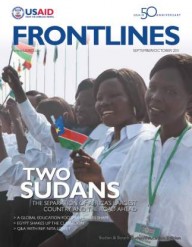

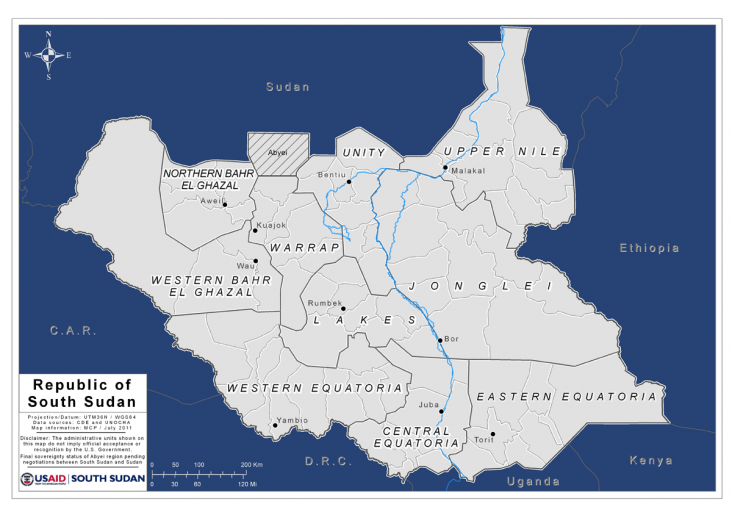
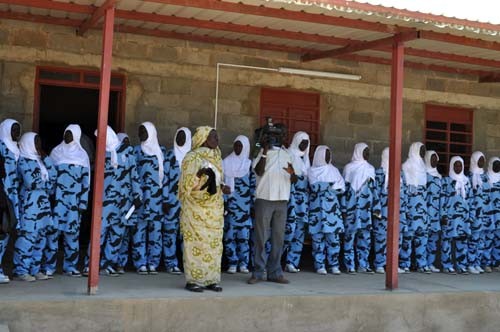
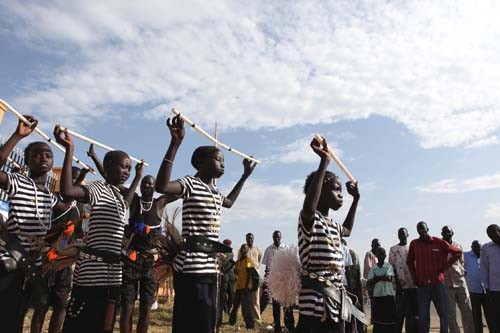
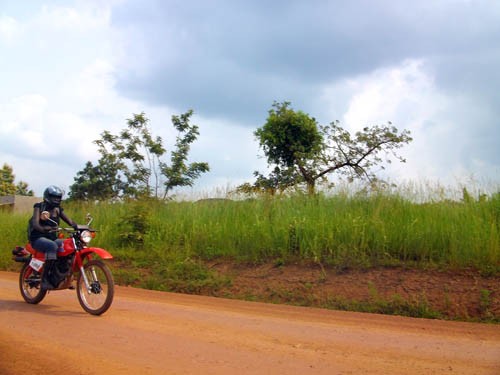
Comment
Make a general inquiry or suggest an improvement.